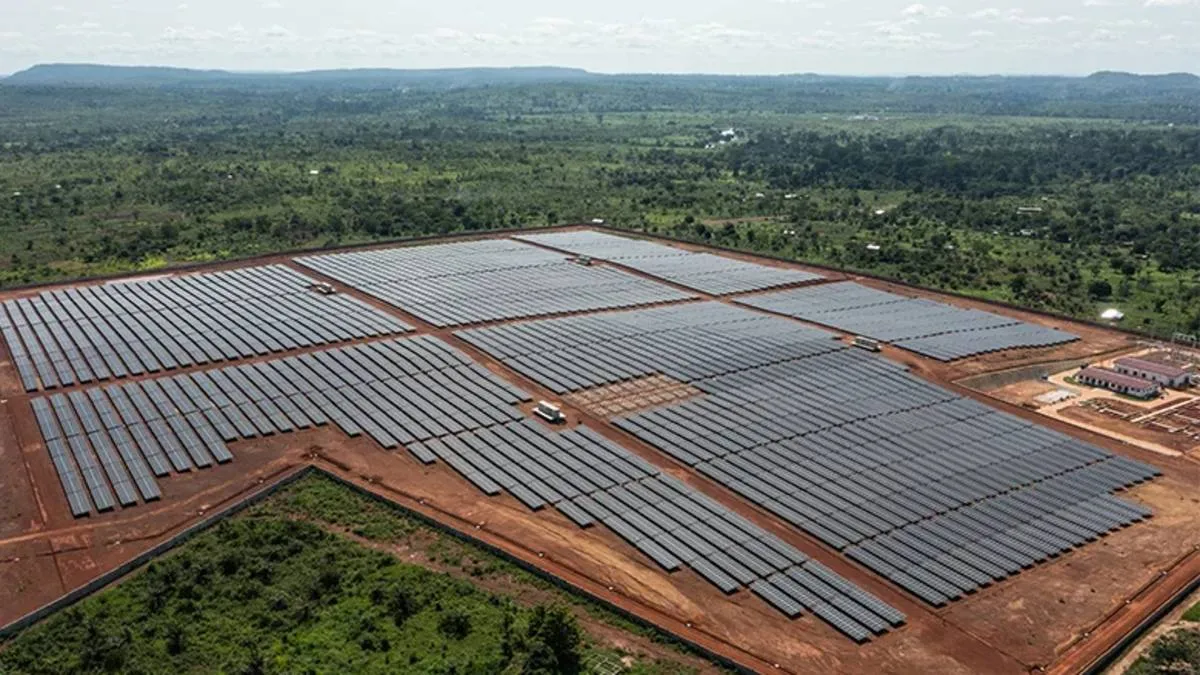Africa imported 15,032 MW of solar panels in the 12 months to June 2025, a 60% increase compared to the previous year, according to new analysis. This is the clearest sign yet that solar is moving from small pilot and rural electrification projects toward broad, mainstream deployment across the continent.
The surge is not confined to one or two countries. While South Africa remains the largest single importer, the real growth is happening outside it. Imports outside South Africa nearly tripled in two years, rising from 3,734 MW to 11,248 MW. In total, 20 African countries set new solar import records over the past 12 months, and 25 countries imported more than 100 MW each.
This shows a clear widening of the solar market beyond a handful of leaders. The continent is beginning to embrace solar energy as a central pillar of its electricity future.
If installed, these panels could transform power access in countries with fragile grids. For example, Sierra Leone’s imports in the past year alone could generate the equivalent of 61% of its total reported electricity generation in 2023. In several other countries, new solar imports would add more than 10% to national generation capacity.
In practice, this means that distributed solar systems and small-scale rooftop projects could dramatically reduce reliance on expensive diesel generators and provide more reliable power to millions of households and businesses.
Why China Matters
The bulk of the imported modules came from China, which currently dominates global solar manufacturing, producing more than four-fifths of the world’s supply. This makes Africa’s solar boom highly dependent on Chinese production, pricing, and logistics.
On the positive side, Africa is tapping into the world’s cheapest solar panels at a time when global prices have fallen sharply. That makes solar more competitive against fossil fuels, especially diesel, which is widely used as backup power in countries with unreliable grids.
How the Data Was Calculated
The import figures are based on Chinese customs export data, which was converted into megawatts using monthly module price data. This method provides a timely picture of how many panels are physically leaving Chinese ports bound for Africa.
However, there are limitations. Imports don’t always equal installations. Panels can be warehoused for months, re-exported, or delayed due to financing and grid connection issues. Tracking actual installations still requires better local registration systems and satellite monitoring.
Also read; How Africa Can Diversify Its Renewable Energy with Hydropower
Several factors explain the sudden rise in imports:
- Falling Module Prices: Solar panels have never been cheaper, with global oversupply driving costs down.
- Diesel Substitution: Businesses and households, especially in Nigeria, see solar as a cheaper and more reliable alternative to diesel generators. Payback times can be measured in months.
- Policy Support: Governments have eased rules for off-grid and mini-grid projects, while donor-backed programs are financing solar for schools, clinics, and rural communities.
- New Financing Models: Pay-as-you-go systems, microfinance, and leasing arrangements are lowering the upfront cost barrier for ordinary consumers.
South Africa still tops the list, but the import growth elsewhere is striking. Nigeria has now overtaken Egypt as the second-largest importer, while Algeria surged into the top three. Smaller nations are also joining the trend: countries like Liberia, Benin, Eritrea, and Somalia recorded severalfold increases in their solar imports.
This shift shows that solar is no longer concentrated in a few “big player” markets. Instead, it is spreading across the continent, with both utility-scale projects and household-level adoption.
The import boom presents both opportunities and challenges:
- Opportunities:
- Rapidly improve electricity access and reduce blackouts.
- Lower national fuel import bills by cutting reliance on diesel.
- Empower small businesses, schools, and clinics with affordable power.
- Rapidly improve electricity access and reduce blackouts.
- Challenges:
- Heavy reliance on imports limits local industrial development.
- Unregistered solar installations make it harder for governments to plan grid expansion.
- Lack of storage and grid integration could waste potential solar power.
- Heavy reliance on imports limits local industrial development.
Experts stress the importance of tracking solar deployment more systematically, improving regulatory frameworks, and investing in complementary technologies like batteries and smart grids.
Not every imported panel will translate into usable electricity right away. Possible risks include:
- Warehousing: Large shipments may sit idle before installation.
- Financing Gaps: Panels alone don’t provide power without inverters, batteries, and skilled labor.
- Quality Issues: Inconsistent standards could affect long-term reliability.
- Local Manufacturing Pressure: Cheap imports could undermine efforts to establish African solar manufacturing industries unless industrial policy is strengthened.
Also read: How Women Entrepreneurs Are Shaping the Future of Peace, Security, and Clean Energy
Several indicators will determine whether this import surge becomes a true turning point for African energy:
- Actual Installations: Tracking registered rooftop and utility-scale projects.
- Local Manufacturing: Emerging solar production facilities in South Africa, Morocco, and Egypt.
- Storage Solutions: Investments in batteries and hybrid systems to stabilize intermittent solar.
- Grid Integration: How governments manage the inflow of distributed solar to avoid grid instability.
- Policy Alignment: Whether governments incentivize solar adoption while building local value chains.



